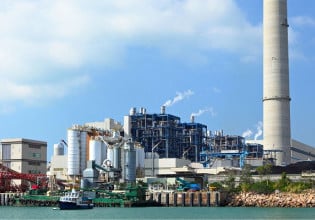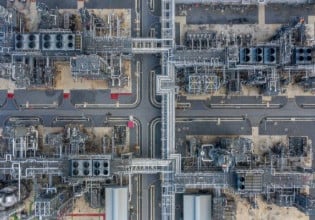Diving Robot Powered by Beckhoff Helps Clean the Canals in Venice
A research team has leveraged Beckhoff industrial PCs and sensor arrays to remove trash from water up to 20 m deep, using a robot to clean trash from a popular, yet polluted location.
Beckhoff’s latest partnership project involves finding novel ways to clean the world-famous canals in Venice, with a vision of scaling this type of technology for use around the globe.
Over the years, tons of garbage has found its way into these waterways, which can harm aquatic life and reduce the aesthetic appeal of the waterways. One of the largest threats is microplastic contamination, which results from the decomposition of many materials that have been discarded in the water.
To alleviate these environmental concerns, a research team from Spain, France, and Italy has leveraged the expertise of Beckhoff to develop a tethered yet autonomous robot capable of locating and removing objects as large as 130 kg (about 280 lbs) from water as deep as 20 m. The initiative is part of the European Horizon 2020 - MAELSTROM project, aimed at cleaning the seabed. The project has been initially tested in the canal waters of Venice, Italy.
Beckhoff Robot Design
This autonomous robot floats along the surface using a variety of surface and submersible sensors to detect trash. Once trash has been located, the robot positions itself overhead, and drops into the water using either a gripper or suction cup to grab the object. With a lifting capacity of 130 kg, the robot has an easy time removing tires, old fishing nets, building materials, appliances, and other such objects.
While the robot skims along the surface using an array of cables, it also picks up floating pieces of trash using a suction mechanism. High selectivity in detection means energy savings and efficiency by only submerging when verified garbage is found.

Beckhoff-powered robot suspended on steel cables, removing a tire. Image used courtesy of TECNALIA
Sensor Suite
The autonomous robot uses a series of cameras and lighting, both above and below the surface, to locate objects. Doppler velocity data is used to determine the trajectory of the robot in the water, with four sonar sensors and a pressure sensor determining the depth. It can also be guided by a joystick for manual control. Furthermore, operators can identify suspicious objects on the human machine interface (HMI) screen. Positioning is made possible using GPS data which could be communicated between other robots for coordinated cleanup efforts in the future.
Motion Control
To actually perform the cleanup duties, the robot relies on twelve axes of motion: eight winches and four slides mounted on pontoon masts. Brushless Beckhoff AM8071 servo motors, controlled by AX5118 servo drives, are used to generate the precise motion required to move the winches. This is all installed in a Beckhoff C6650 control cabinet industrial PC, mounted on board the ship that will serve as the control center for the robot.

Beckhoff C6650 control cabinet industrial PC. Image used courtesy of TECNALIA
Safety Features
The winches are equipped with overload sensors to prevent the robot from attempting to pick up an object that is too heavy, or to detect other faults from high current draw on the cable motors. Also, the depth is tracked to prevent the robot from diving too deep, preventing collisions with the seabed.
Automation and the Environment
It seems inevitable that trash ends up in the waterways of the world. Regardless of efforts to reduce waste, regulations to prevent dumping of trash, and other measures, there are still millions of tons entering the world’s waterways.
These efforts by research teams in partnership with OEMs like Beckhoff provide one possible solution for cleaning up the water. While tested in Venice, they will have applications in rivers, canals, ponds, and lakes all around the world in the near future.






